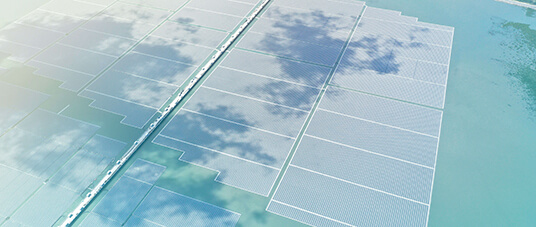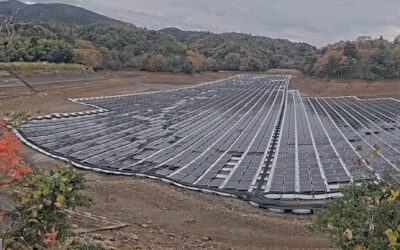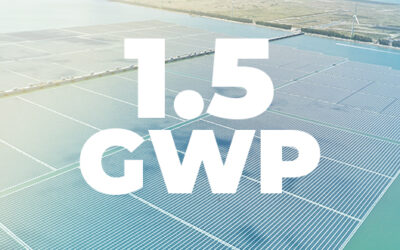Chez Ciel & Terre, notre objectif est de rendre l’énergie solaire accessible au plus grand nombre possible d’EPC, d’IPP et de développeurs. C’est pourquoi nous travaillons dur pour que nos produits et nos solutions d’ancrage répondent à vos besoins et aux normes du marché. Ciel & Terre adapte l’ancrage aux contraintes et à l’environnement des projets solaires flottants. Notre processus de travail, entre autres attributs, prend en compte le type de bassin, le type de sol et bien sûr les spécificités climatiques. Grâce à notre expertise et à notre expérience, nos technico-commerciaux sont en mesure de vous soumettre rapidement des designs qui répondront précisément à toutes ces particularités.

CIEL & TERRE CONÇOIT L’ANCRAGE EN TENANT COMPTE DU TYPE DE BASSIN
COMPRENDRE LA NÉCESSITÉ DU DESIGN D’ANCRAGE…
Au fil des années, nous avons appris à comprendre le caractère unique de chaque projet. Qu’il s’agisse d’exigences juridiques, administratives ou personnelles, nous avons une vision aiguë et une capacité intelligente à façonner nos solutions en fonction de votre activité.
Nous travaillons selon deux méthodes d’ancrage : l’ancrage en berge et l’ancrage au fond, en fonction des spécificités du site.
…ET S’ADAPTER À TOUS LES PROJETS SOLAIRES FLOTTANTS
Systématiquement, Ciel & Terre adapte l’ancrage aux caractéristiques des projets solaires flottants. Quelle que soit la méthode choisie, c’est le rapport entre l’îlôt solaire flottant et la taille du bassin qui prévaut. L’ancrage en berge est une option économique et précise. Il est particulièrement recommandé si votre bassin est profond ou si le sol est irrégulier. Cette méthode permet de préserver l’habitat naturel et le paysage. Elle est particulièrement adaptée lorsque le réservoir est peu profond et que le sol est plat. En effet, plus le fond est profond, plus il est difficile d’être précis lors de l’installation des poids morts.
Sur certaines installations, nous combinons également l’ancrage au fond et l’ancrage en berge. Cette méthode est appelée « ancrage hybride ». Elle est particulièrement appropriée lorsque la taille du réservoir est assez importante par rapport à la taille de l’îlot solaire. Dans ce cas, nous installons la centrale FPV près de la berge et l’ancrons à la fois au fond et sur la berge.
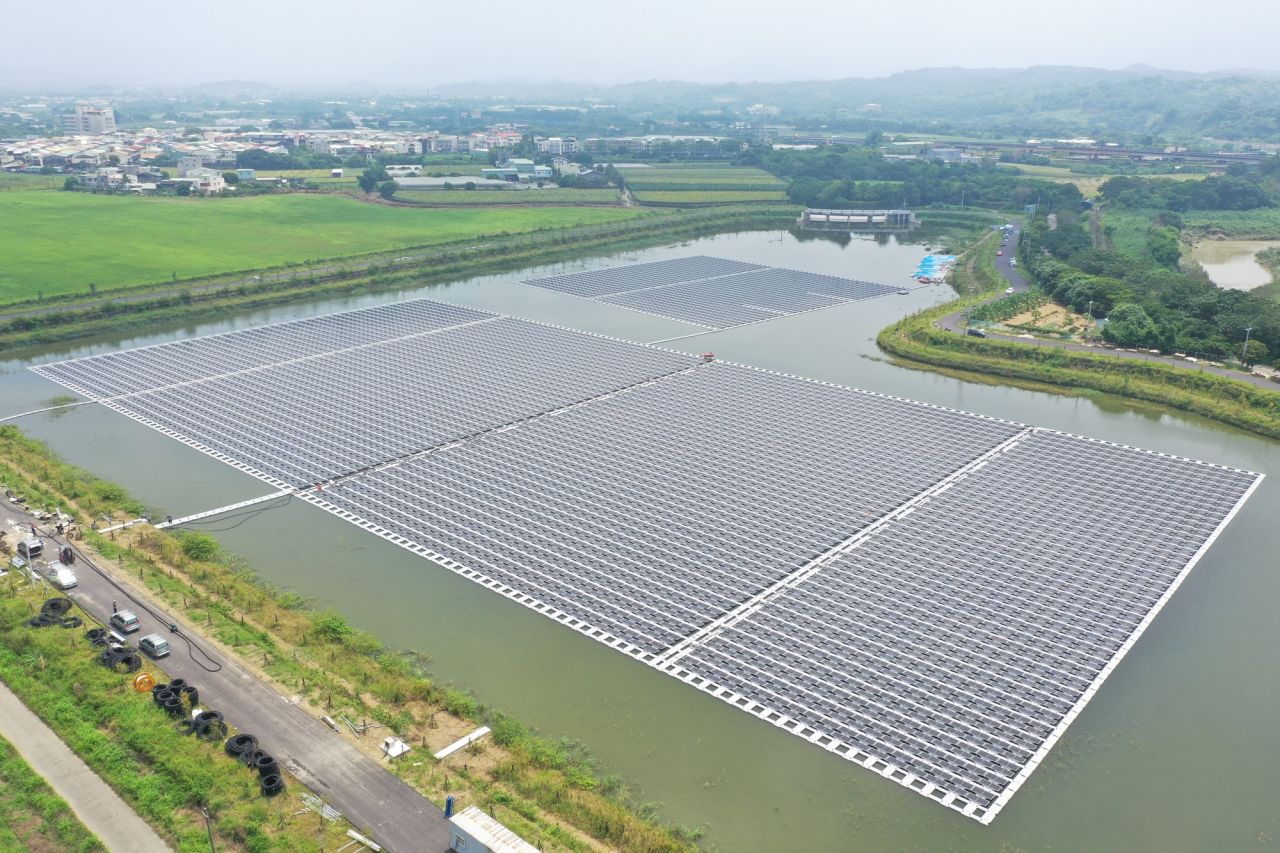
LES INGÉNIEURS ADAPTENT L’ANCRAGE EN FONCTION DU TYPE DE SOL
COMPRENDRE L’ENVIRONNEMENT POUR REUSSIR L’ANCRAGE…
Il est essentiel de comprendre le type de sol pour réaliser des estimations d’ancrage et travailler avec les techniques adaptées. Que le sol soit ferme, mou, naturel ou artificiel, il aura automatiquement un impact sur le type d’ancrage utilisé. Dans le cadre des deux méthodes susmentionnées, nous avons développé différentes techniques pour réaliser nos conceptions d’ancrage.
Par exemple, lorsque le sol est mou, nous choisissons des techniques de percussion plutôt que des poids morts. En revanche, lorsque le sol est argileux, nous nous concentrons sur les techniques d’hélice pour assurer un ancrage sûr. Lorsque nous envisageons d’utiliser des poids morts, nous nous assurons que le risque de friction est minimal car il peut, avec le temps, avoir un impact sur la stabilité de l’îlot FPV.
Au début d’un projet, et avant d’entamer tout calcul concernant les constructions d’ancrage, nous recueillons autant d’informations que possible sur le réservoir. Il s’agit notamment des caractéristiques du sol. Les études géotechniques permettent d’éviter des avant-projets imprécis. Elles garantissent également un déroulement précis du projet. Dans la mesure du possible, nous travaillons avec des entreprises tierces qui effectuent des essais sur le sol. Ces essais aident nos designers d’ancrage en leur fournissant davantage de données. Ainsi, cela les aide à fournir des projections rigoureuses.
… ET S’APPUYER SUR L’EXPÉRIENCE ACQUISE SUR LE TERRAIN DANS LE CADRE DE PROJETS SOLAIRES FLOTTANTS
Depuis plus de 10 ans que nous travaillons dans le secteur de l’énergie solaire flottante, nous avons dû trouver des solutions innovantes pour déployer des plateformes FPV de plus en plus étendues. Les défis que Ciel & Terre a relevés avec succès nous ont poussés à proposer des technologies et des techniques toujours plus innovantes et adaptées. Par exemple, sur l’installation d’Alto Rabagao, nous avons été confrontés à deux facteurs inédits :
- une profondeur importante de 80m
- des variations d’eau très importantes avec plus de 30m par jour.
La principale difficulté était de rester précis lors du calcul de la position des ancres, et bien sûr, lors de leur installation. Pour répondre à ces circonstances, nous avons développé l’Ancrelight, notre plateforme flottante de plongée d’ancrage. Cet outil nous a permis de revoir nos capacités sur de futurs projets et d’élargir notre champ d’action à de nouveaux sites et réservoirs d’eau.
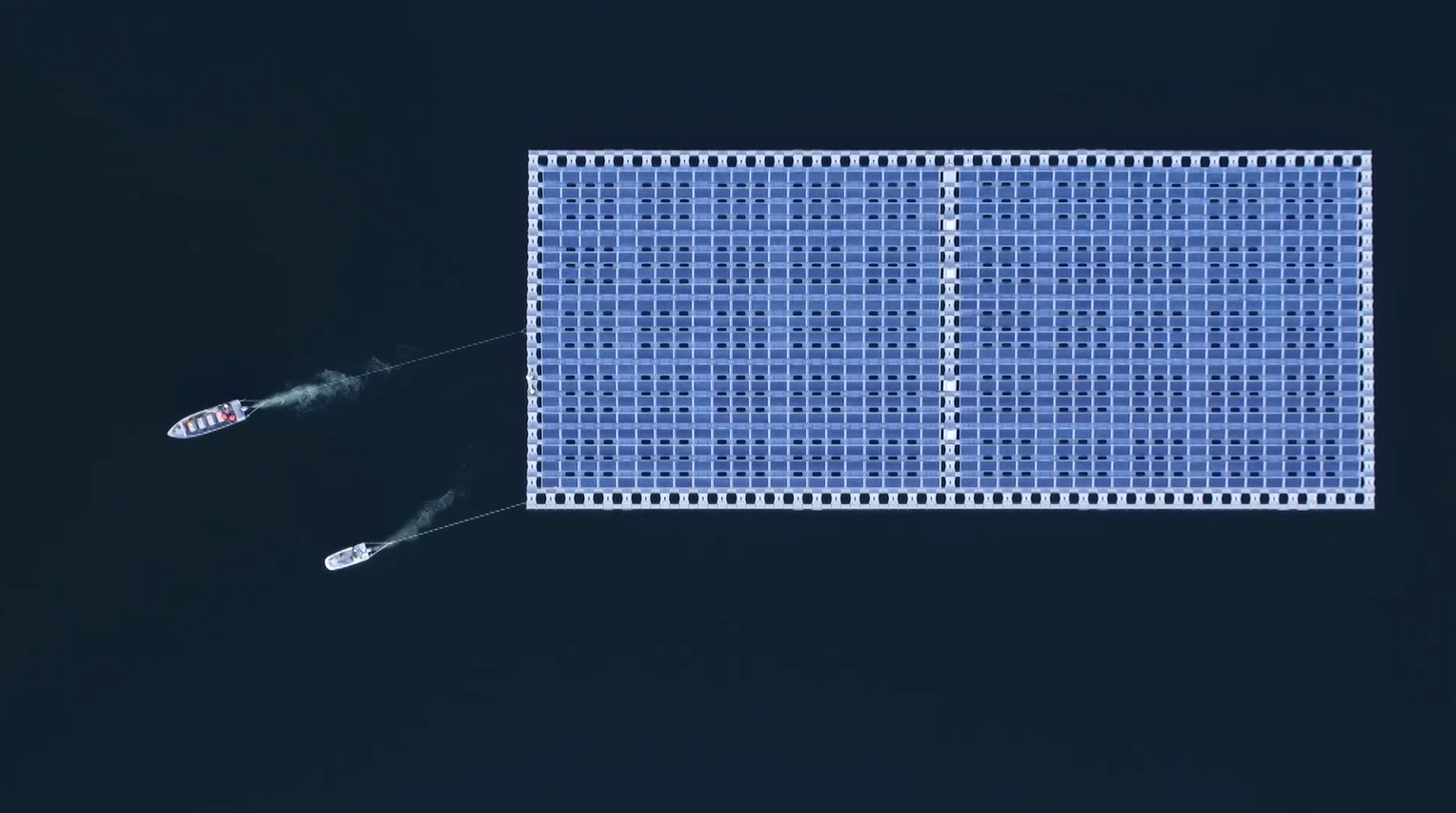
LA PRISE EN COMPTE DES CONTRAINTES CLIMATIQUES POUR TOUS LES PROJETS SOLAIRES FLOTTANTS
Les conditions climatiques sont aussi des éléments essentielles pour définir la conception de l’ancrage. Elles sont en effet les plus susceptibles d’avoir un impact sur la stabilité de l’îlot solaire. Comme mentionné ci-dessus, les variations du niveau d’eau sont l’une des contraintes climatiques auxquelles nous devons être attentifs lorsque nous concevons des solutions d’ancrage. Cependant, et sans aucun doute, elles ne sont pas le seul point d’attention lié au climat. En effet, de nombreux aspects et facteurs doivent être pris en compte. Cela est particulièrement vrai si l’on envisage d’établir des réseaux FPV plus loin du rivage. C’est le cas du projet Changbin présenté ci-dessous.
Lors de la conception d’une centrale solaire flottante, installée près du rivage, nous avons dû tenir compte d’un nouvel aspect : le changement climatique. En effet, nos clients sont de plus en plus attentifs à ce facteur. Ciel & Terre anticipe donc les impacts probables qu’il aura sur ses installations solaires flottantes dans les prochaines décennies. Cela implique que nos designers d’ancrages doivent considérer les transformations possibles de chaque aspect qui sera impacté par le climat pour la totalité de la durée de vie de la plateforme.

Alors que de nouvelles possibilités, telles que l’installation de centrales FPV plus loin des côtes, sont offertes à l’industrie du solaire flottant, les technologies que nous utilisons doivent être pensées en conséquence. Nos équipes repensent et adaptent constamment les solutions d’ancrage. En effet, Ciel & Terre adapte l’ancrage afin d’apporter à ses clients les réponses les plus appropriées.
Notre expertise unique et étendue nous permet de sortir des sentiers battus. Non seulement pour trouver des solutions adaptées à vos projets actuels, mais aussi pour anticiper et prédire les événements futurs. Nous avons l’intention de nous assurer que les designs actuels dureront aussi longtemps que nous couvrirons l’entretien et le soutien des installations.
Pour faire prospérer le marché de l’énergie solaire flottante, il est important de définir des normes d’ancrage. La conception de l’ancrage est un élément fondamental de la construction des installations FPV. Cet aspect essentiel doit être réglementé, non seulement pour la sécurité des installations mais aussi pour le déploiement des centrales. Leur emplacement et leur taille doivent toujours être pris en compte.
Par Caroline, marketing & Lise, engineer

